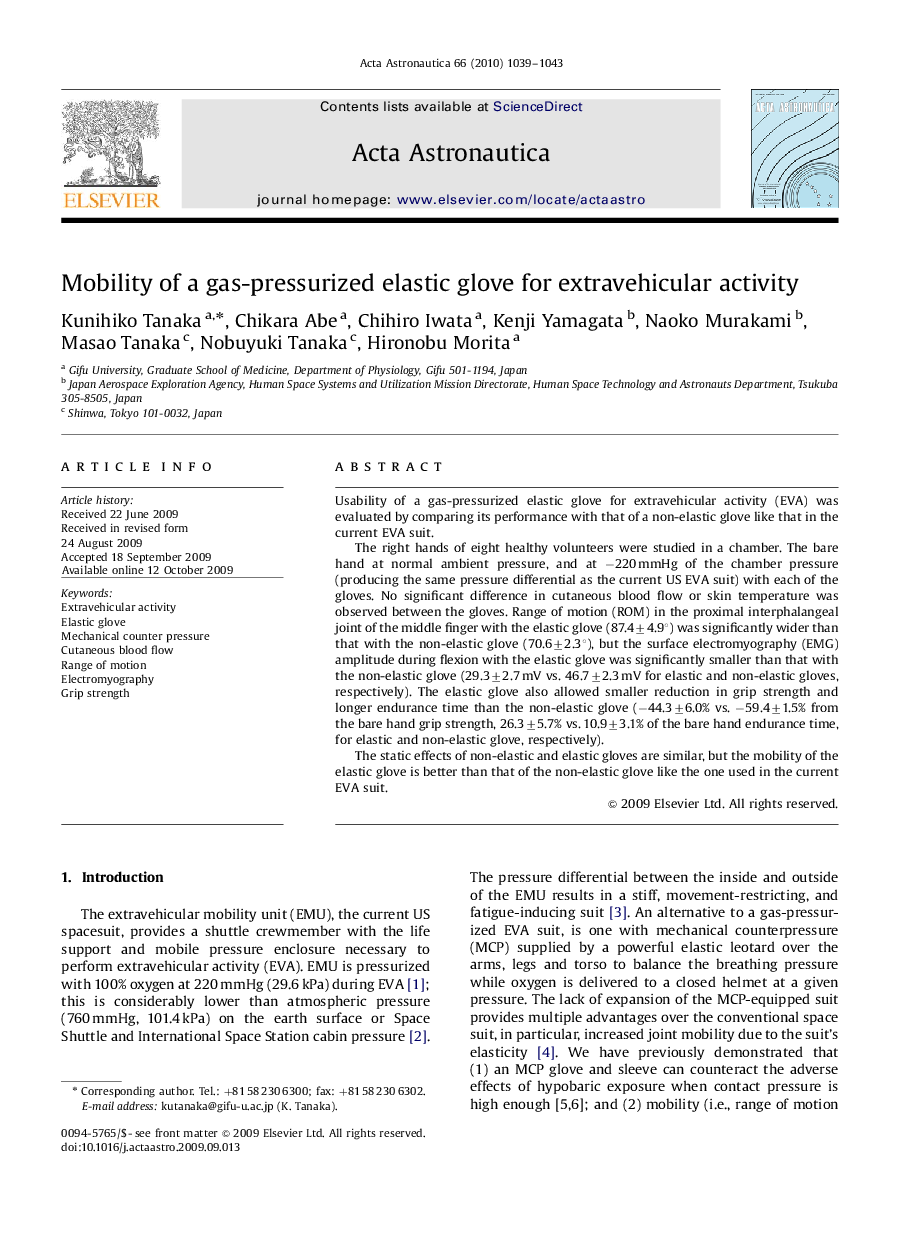| Article ID | Journal | Published Year | Pages | File Type |
|---|---|---|---|---|
| 1715722 | Acta Astronautica | 2010 | 5 Pages |
Usability of a gas-pressurized elastic glove for extravehicular activity (EVA) was evaluated by comparing its performance with that of a non-elastic glove like that in the current EVA suit.The right hands of eight healthy volunteers were studied in a chamber. The bare hand at normal ambient pressure, and at −220 mmHg of the chamber pressure (producing the same pressure differential as the current US EVA suit) with each of the gloves. No significant difference in cutaneous blood flow or skin temperature was observed between the gloves. Range of motion (ROM) in the proximal interphalangeal joint of the middle finger with the elastic glove (87.4±4.9°) was significantly wider than that with the non-elastic glove (70.6±2.3°), but the surface electromyography (EMG) amplitude during flexion with the elastic glove was significantly smaller than that with the non-elastic glove (29.3±2.7 mV vs. 46.7±2.3 mV for elastic and non-elastic gloves, respectively). The elastic glove also allowed smaller reduction in grip strength and longer endurance time than the non-elastic glove (−44.3±6.0% vs. −59.4±1.5% from the bare hand grip strength, 26.3±5.7% vs. 10.9±3.1% of the bare hand endurance time, for elastic and non-elastic glove, respectively).The static effects of non-elastic and elastic gloves are similar, but the mobility of the elastic glove is better than that of the non-elastic glove like the one used in the current EVA suit.
